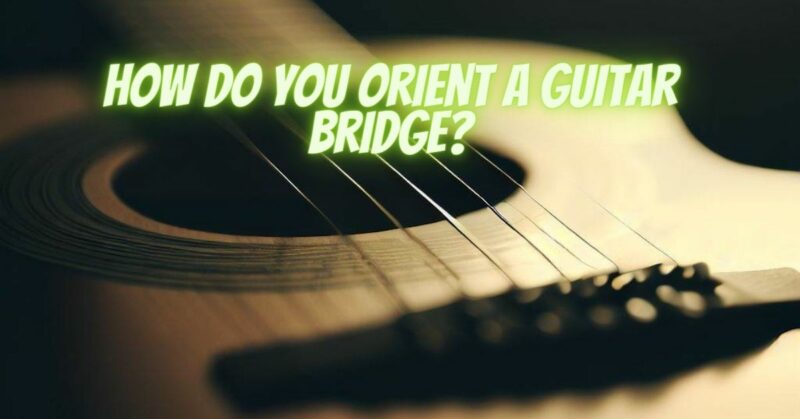The bridge of a guitar plays a crucial role in determining the instrument’s intonation, action, and overall playability. Properly orienting the bridge is essential to ensure your guitar sounds in tune and feels comfortable to play. In this article, we’ll explore the steps for correctly orienting a guitar bridge to achieve optimal performance.
Understanding the Guitar Bridge
The bridge of an acoustic or electric guitar serves as an anchor for the strings. It transmits string vibrations to the guitar’s body, producing sound. The position and alignment of the bridge are vital for maintaining accurate intonation, ensuring proper string action, and achieving the best possible tone.
Steps to Orient a Guitar Bridge:
- Locate the Bridge Position:
- On most guitars, the bridge is positioned relative to the scale length, which is the distance from the nut to the 12th fret, doubled. The 12th fret is often marked on the fingerboard.
- On acoustic guitars, the bridge is typically centered along the soundboard, perpendicular to the centerline of the guitar.
- On electric guitars, the bridge’s position may vary depending on the model. It’s often located at a calculated distance from the nut, taking into account the scale length and desired intonation.
- Check the Bridge Alignment:
- To ensure proper bridge alignment, use a straightedge or a long, straight piece of string.
- Place the straightedge or string along the neck, starting at the nut and extending over the bridge.
- Visually confirm that the bridge is aligned parallel to the straightedge or string. Any deviation from parallel alignment can affect intonation.
- Intonation Check:
- Play each string open (without pressing it down on any fret) and then play the same string at the 12th fret.
- Compare the open string note to the 12th fret note. They should be perfectly in tune. If they are not, the bridge’s position may need to be adjusted.
- Adjust the Bridge Position (if necessary):
- If the intonation is consistently sharp (12th fret note is higher in pitch than the open string), the bridge may need to be moved slightly away from the neck.
- If the intonation is consistently flat (12th fret note is lower in pitch than the open string), the bridge may need to be moved slightly toward the neck.
- Most electric guitars allow for bridge adjustment using saddle screws. Acoustic guitar bridges may require professional adjustments.
- Recheck and Fine-Tune:
- After adjusting the bridge position, recheck the intonation by playing open strings and their corresponding 12th fret notes.
- Make further adjustments as needed until intonation is precise.
Consult a Professional
Setting the bridge position and intonation can be a delicate process, especially on acoustic guitars with fixed bridges. If you are unsure about adjusting the bridge or encounter difficulties, it’s advisable to consult a professional guitar technician or luthier. They have the expertise and tools needed to ensure accurate bridge orientation and intonation.
Orienting a guitar bridge correctly is essential for maintaining proper intonation and playability. By following these steps and paying attention to the alignment of your guitar’s bridge, you can enjoy an instrument that not only sounds in tune but also feels comfortable to play, allowing you to fully express your musical creativity.


